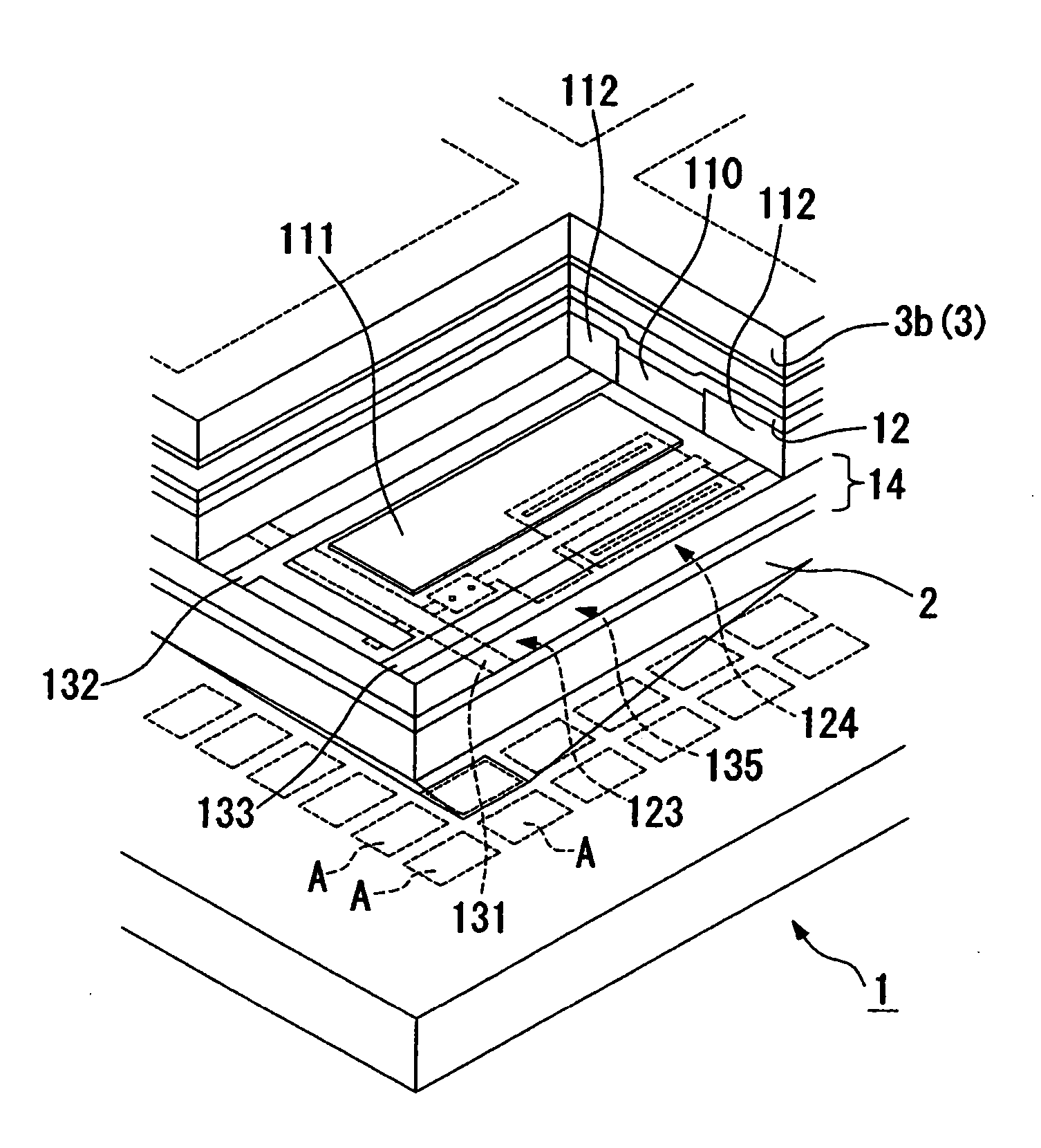Organic EL device and electronic apparatus
a technology of electronic equipment and el, applied in the direction of discharge tube luminescnet screen, discharge tube/lamp details, electric discharge lamps, etc., can solve the problems of increasing driving voltage and efficiency, difficult to optimize all pixels, and relatively low color purity, so as to prevent the generation of defects, increase the driving voltage, and improve the effect of color purity
- Summary
- Abstract
- Description
- Claims
- Application Information
AI Technical Summary
Benefits of technology
Problems solved by technology
Method used
Image
Examples
first embodiment
[0040]FIG. 1 is an explanatory diagram schematically illustrating the main parts of an organic electroluminescent (EL) device according to an embodiment of the invention, particularly, an active matrix organic EL device 1. In addition, the organic EL device 1 adopts an active matrix driving method using thin film transistors.
[0041] The organic EL device 1 is formed by laminating, on a substrate 2, a circuit element portion 14 including thin film transistors, serving as circuit elements, pixel electrodes (anodes) 111, a functional layer 110 including an organic EL layer (organic EL element), a cathode 12, a sealing portion 3, etc., in this order.
[0042] In this embodiment, a glass substrate is used as the substrate 2. However, various well-known substrates used for an electro-optical device or a circuit substrate, such as a silicon substrate, a quartz substrate, a ceramic substrate, a metal substrate, a plastic substrate, and a plastic film substrate, can be used as the substrate 2,...
second embodiment
[0080] Next, an organic EL device according to a second embodiment will be described with reference to FIG. 4. This embodiment is characterized in that the pixel electrodes 111 having a function of absorbing red light are provided in the green (G) and blue (B) pixels, unlike the first embodiment, and the other structures thereof are substantially the same as those in the first embodiment. Therefore, in this embodiment, components different from those in the first embodiment will be described in detail.
[0081] An organic EL device 100 of the second embodiment has the same structure as the organic EL device 1 of the first embodiment in the red (R) pixel. On the other hand, for the green (G) and blue (B) pixels, pixel electrodes 127 having both an electrode (anode) function and a filter function of absorbing light (corresponding to red light) having a wavelength greater than 550 nm are provided on the second interlayer insulating film 144b. More specifically, an Sn phthalocyanine compo...
third embodiment
[0084] Next, an organic EL device according to a third embodiment will be described with reference to FIG. 5. In the third embodiment, in the green (G) and blue (B) pixels, two pixel electrodes are formed in one pixel, and two TFTs are formed corresponding thereto, unlike the first and second embodiments. On the other hand, the red (R) pixel has the same structure as those in the first and second embodiments. Therefore, components different from those in the first and second embodiments will be described below in detail.
[0085] In an organic EL device 101 shown in FIG. 5, each of the green (G) and blue (B) pixels is divided into two dots, and two pixel electrodes are formed in one pixel. The two pixel electrodes formed in one pixel are a pixel electrode 127 (hereinafter, referred to as a colored pixel electrode 127), functioning as a red absorption filter, and the pixel electrode 111 not having the filter function, respectively, and the TFTs 123 are respectively connected to the pix...
PUM
 Login to View More
Login to View More Abstract
Description
Claims
Application Information
 Login to View More
Login to View More - R&D
- Intellectual Property
- Life Sciences
- Materials
- Tech Scout
- Unparalleled Data Quality
- Higher Quality Content
- 60% Fewer Hallucinations
Browse by: Latest US Patents, China's latest patents, Technical Efficacy Thesaurus, Application Domain, Technology Topic, Popular Technical Reports.
© 2025 PatSnap. All rights reserved.Legal|Privacy policy|Modern Slavery Act Transparency Statement|Sitemap|About US| Contact US: help@patsnap.com



